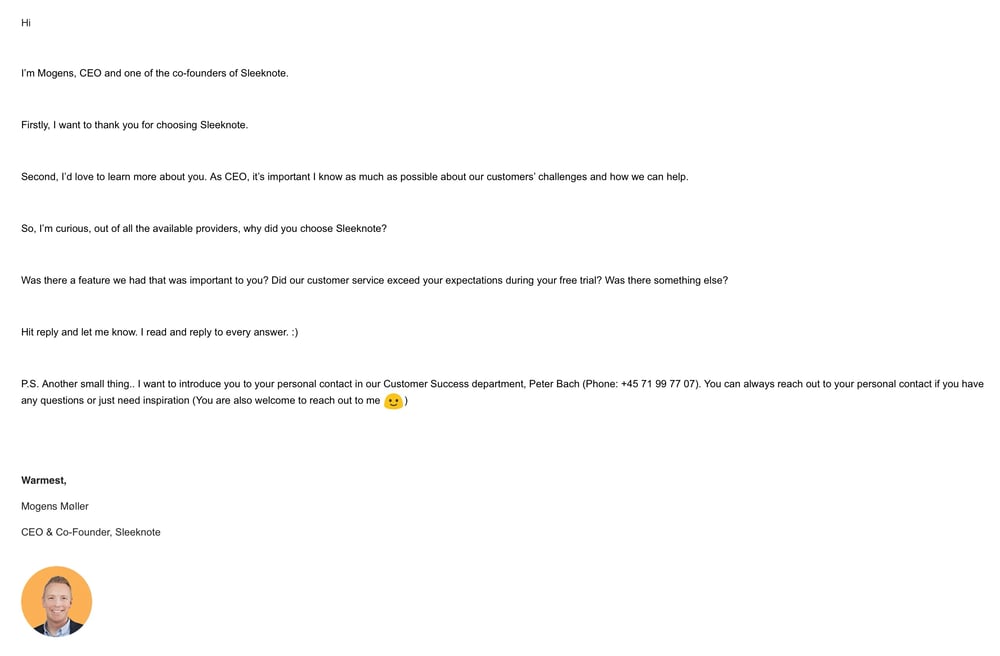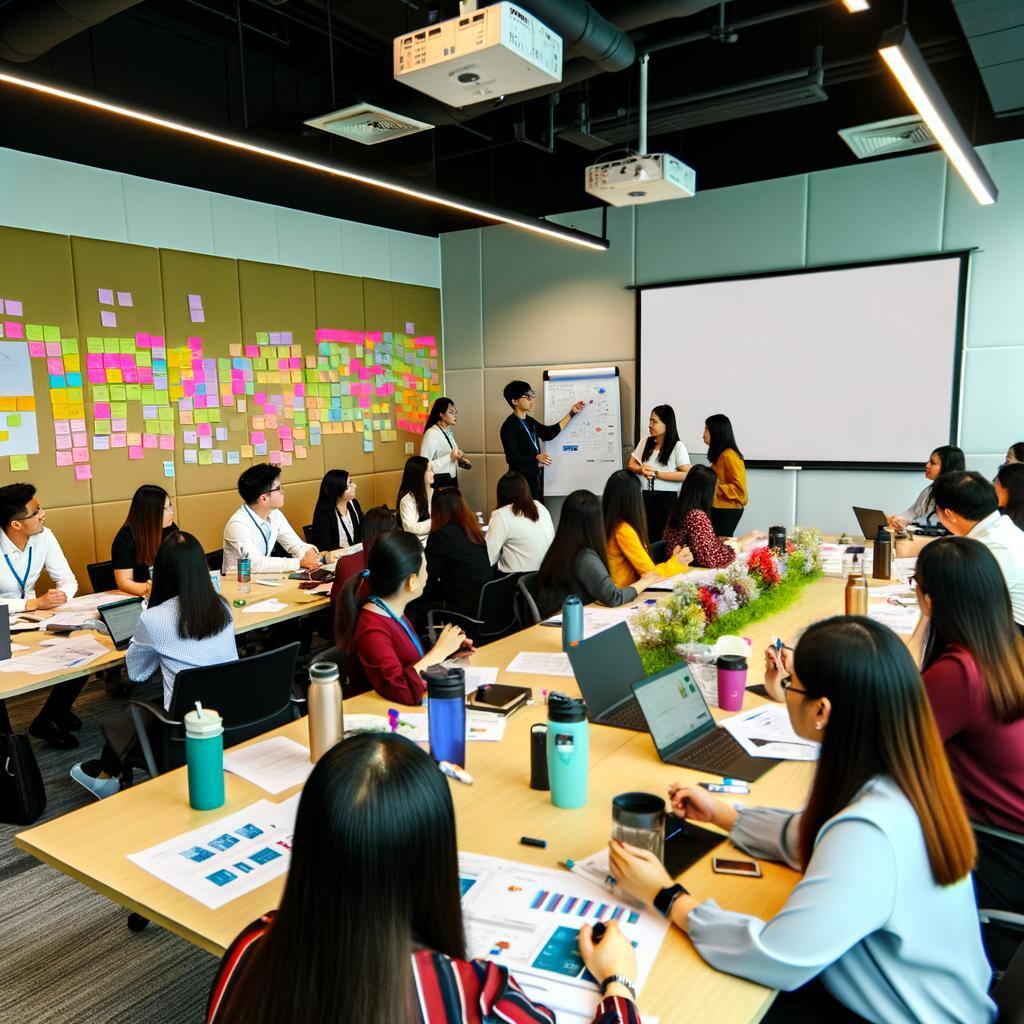Feedback: A consultant's key to achieving high performance
9 min read
Time tracking
Build your perfect data foundation for spotless invoicing and deep business insights with easy time tracking.
Project management
Be a world champion project manager. Keep your projects on track - and profitable.
Resource management
Efficiently staff projects and run a predictable business with confidence.
Insights & Reporting
Get smarter - faster - to make clever decisions for long-term growth impact.
Project accounting & Invoicing
Invoice everything - fast and accurate - while staying on top of project finances.
Staff & Salary
Give accountants and HR an intelligent tool to eliminate draining administration.
Financial Systems
TimeLog offers standard integrations for all your favourite financial systems. Save time and reduce manual tasks.
Payroll Solutions
TimeLog offers standard integrations for multiple payroll solutions. Get easy salary administration and only enter payroll information once.
Add-ons
Track time automatically via Outlook, use gamification or find another add-on that can support your business.
Multiple Legal Entities
You can create synergy between your departments and across borders and offices with the Multiple Legal Entities module from TimeLog.
Business Intelligence
Utilise the insights you get from TimeLog to the fullest. Our system is ready to integrate with multiple BI solutions.
Partner Integrations
TimeLog PSA is part of a large ecosystem. Get an overview of all the partner integrations in the TimeLog family.
Economy department
Save 1-2 days a month on your invoicing process.
Project teams
From planning to execution and evaluation. Robust tools for every project manager.
Management teams
Create a performance-driven culture with solid reporting capabilities.
Large enterprises
Enhance operations and performance across entities, countries and departments.
NGOs and non-profit organisations
Simplify internal processes, spend less time on administration, and get documentation in place - at a discounted rate.
Blog
Get inspired to run an even better business with articles, guides and analyses.
Guides, podcasts and webinars
Get access to templates, guides and webinars that help and inspire you.
Help Center
Looking for help material and user guides to the TimeLog system? Look no further. Find all the help you need now.
Get a single source of truth
Discover how companies maintain a single source of truth across borders, departments, and currencies.
Get integrated
Discover the advantages customers gain from utilising our integrations and API.
Reporting in real-time
Explore how others leverage reporting to optimise their processes and make informed decisions.
Get started with resource planning
Discover how other companies thoroughly grasp their resources and enhance their ability to predict future trends.
Improved project financials
This is how the efficient financial toolbox from TimeLog helps project managers and CFOs improve their project financials.
Faster invoicing
Discover how other companies have slashed the time spent on invoicing by 75% - and uncover how you can achieve the same efficiency.
The Story of TimeLog
Get insights on TimeLog and how we can help you grow and evolve your business.
Employees
See who shows up every day to deliver the best PSA solution.
Career
What's life like at TimeLog? Are we hiring? Get the answer here.
Partner
Create even more value for your customers, as well as ours, as a TimeLog Partner.
Premium Service
Online Help Center, tailored onboarding and support from Day 1.
Corporate Social Responsibility
We work to ensure a positive impact on planet, people and businesses.
Security and GDPR
Learn more about how we work to keep your data safe and provide maximum security.
12 min read
Lytter du til kunderne? Product Owners hos nogle af landets førende software-virksomheder deler deres bedste tips og tricks til, hvordan du inddrager feedback i din produktudvikling.

Are you a product owner, and do you need new inspiration to how you can work with customer feedback in your product development?
To help you in the right direction, I’ve teamed up with Product Owners at some of Denmark’s leading software companies and asked them to describe how they work with customer feedback in their product development.
When are surveys a good method for feedback collection? And when should you invite for a dialogue instead?
Which customer feedback tool can you use, and how do you process the customer’s feedback, once you have received it?
You can dive into these questions and much more in my blog post.
Will give you (specific) inspiration to how you can take your product development to new heights in cooperation with your customers.
"The most important thing is not how we collect the feedback, but how we use it"

Cecilie is one of three Heads of Product in DataLøn with focus on front end development.
She has 12 years of experience in DataLøn, and the past 5 years she’s been part of the development department.
Customer feedback is of great importance to Visma DataLøn, as it’s the customers who use and understand the system. This doesn’t mean that we’re always only driven by the customer feedback, because the legislation does not always take user-friendliness into account. However, we also try to include the customers in this aspect. And it’s our job to make things as simple as possible in a complex world.
Our customers can provide feedback via NPS (customer satisfaction survey), user surveys and Open Mic.
The customers are presented with the NPS (customer satisfaction survey), when they use key functionality in the salary system. Here they have the option to assess the experience and write a comment about what was good and what was bad.
We also send user surveys and invite our customers for Open Mic. Open Mic offers our customers the opportunity to share all their feature requests, and they are all taken into consideration. It was especially when the new Danish vacation act became effective that our Open Mic became a good method to collect feedback. We got a lot of nice features out of it.
Customer feedback has strengthened the customer relationships and in the end, we get a better product with the users in the spotlight

Customer feedback has strengthened the customer relationships and in the end, we get a better product with the users in focus.
In May, we’ll launch new salary reporting and a new employee view in DataLøn. This will have a huge impact on the customers, as they are two of the main functions in the salary system.
Both have received a new design, flow and features. And all of it comes to life with the help of our customers. Last year, we invited several customers to provide their feedback on our salary reporting and the employee view, because we wanted to improve them. But it should be based on our customers’ wishes, not our own.
Based on the customers’ wishes, needs and opinions, we’ve developed the new salary reporting and employee view.
Visma DataLøn is Denmark’s leading supplier of salary solutions. The salary system addresses primarily small and medium-sized companies and organisations.
The salary system is flexible, safe and easy to work with. The customers only need to report their master data, then Visma DataLøn takes care of the salary calculation, salary payment, reporting to the tax authorities, Statistics Denmark and much more. In this way, Visma DataLøn helps the customers save time, so they can focus on their core business.
Everything. Everything we develop in Sleeknote is in one way or the other driven by user feedback

Daniel is one of Sleeknote’s Co-founders and used to be Creative Director and responsible for front end development. 1.5 years ago, he changed role and became Sleeknote’s CPO.
In the past, he was front end developer and graphical designer at one of Denmark’s most experience e-commerce agencies, TRIC Solutions.
User feedback plays a vital role in everything we do in Sleeknote. From idea and concept development of a new feature to optimisation of the existing product. We take great pride in including our users in as many relevant decision making processes as possible, as it in the end are them who decide if our product provides them with value.
We have several touch points related to user feedback. They all contribute to that we can do our best every day to deliver a product which the users love and provides them with value

It’s also a decisive factor related to increasing the loyalty towards our product. When the users feel heard and have the opportunity to contribute to the product’s development, they are way more loyal towards our product in general.
User tests and similar tend to become an early or half-yearly event where they have a big focus. Then they slowly lose focus.
In-depth analyses like user tests are fantastic, but I recommend you build a suite of touch points, which secure a continuous feedback stream from your users.
What was relevant six months ago, might not be as relevant today. Use different channels (feedback forms, e-mails flows, surveys) in addition to more comprehensive UX research like user tests. It provides you with the opportunity to go in-depth, without you losing the touch of trends among your users.
The different user feedback collection methods each have their purpose and justification. Therefore, you need to customise the method to the context.
In-app feedback forms are e.g. an excellent method to collect general feedback and shed light on possible friction points. If you want to ensure a high answering rate and relevance to the user, you need to present your feedback form in the context where the user is best qualified to answer your question.
All in all, it’s about using the relevant tools in the right context

More comprehensive user tests or surveys on the other hand are fantastic methods when developing specific features or as basis for strategic decisions. Such methods allow you to do more in-depth analyses.
User feedback is relevant for every one in the company, no matter if you are a developer, customer supporter, designer, sales person, CEO or marketing responsible. The user must be central. Therefore, it’s important to keep user feedback transparent and available to everyone in the company.
In Sleeknote, it e.g. shows in a Slack channel, where feedback is shared across the company.
In addition, research from in-depth feedback is presented at quarterly “state of the company” meetings.
At Sleeknote, we make a virtue of identifying why customers selected our product in particular, and what we can do to improve it.
We use different e-mail flows, which among other things include all new customers, where we ask why the customer chose us. We also have a customer pulse survey, where we cover what our users would do differently, if they were CEO at Sleeknote. This provides a better understanding of which needs we cover and which we should improve.

Feedback comes in many shapes and via different channels. In Sleeknote we use ProductBoard as a centralised hub for user insights. This enables us to collect all feedback across channels like Slack, e-mails, feedback forms, Hubspot chats etc. In this way, we secure that our customers are heard no matter which communication channel they use.
In relation to optimisation of fundamental parts of our product (new campaign builder, new dashboards etc.), we have incorporated contextual feedback forms to gain insights into if we improved the experience for our users. It is among other things specifically expressed by:
With the risk of sounding haughty: Everything. Everything we develop in Sleeknote is in one way or the other driven by user feedback.
One of the more notable is our future embedded campaigns feature. With this feature, the users get the opportunity to embed a Sleeknote campaign as part of their website.
It is developed not only because of, but together with our users. They were a decisive factor in the concept development and they will continue to be so as part of our beta test panel.
Sleeknote is a Danish SaaS company that helps e-commerce brands engage their website visitors without affecting their user experience.
When Sleeknote was founded in 2013, there were many lead generating tools on the market. But only a few of them, if any, provided e-commerce suppliers the flexibility to engage with their users on their own terms. And Sleeknote wants to change that.
We include the users in everything we develop

Karen holds 1.5 years of experience as UX Designer and Team Lead at momondo in the product development team, where she was part of optimising the flight and hotel search based on user tests, on-site feedback, surveys and A/B split tests.
In addition, Karen holds 8 years of agency experience from Magnetix/Isobar as UX Designer, where she has developed digital solutions for among other companies Danbolig and ALK-Abello.
Customer feedback, or rather customer dialogue, means everything to our product development.
Wired Relations grew out of a need for companies for a simpler and more user-friendly way to work with GDPR compared to what was already in the market. This need is still our focal point, and we therefore include the users in everything we develop.
When we include customer feedback in the product development, we primarily focus on our target group which is mature companies that take ownership and actively work with GDPR

We have a close dialogue with our customers both in relation to wishes and test of new features.
The product team participates in customer meetings, and we therefore know our customers really well. That is one of the benefits of being part of a B2B start-up.
I’ve worked at momondo previously, where we worked with a completely different amount of customers. There we were more dependent on surveys and market surveys to reach our customers, and therefore you could feel you were far away from them.
We have also sent surveys to our customers in Wired Relations, but it provides most value to us to have a meeting and the direct dialogue.
Our latest release of a management system for information security related to standards, e.g. ISO 27001 and ISAE 3000 are good examples of how we can identify an increasing need and wish to manage both GDPR compliance and information security in one tool.
We first learned about the need at customer meetings. The solution is developed and user tested by a selection of our customers, and it still develops as our customers take it into use and provide us with their feedback.
is a Danish SaaS tech company that changes privacy & security management with automation. Wired Relations is a widely spread and one of the most user-friendly privacy & security management platforms in the market.
Wired Relations is used by hundreds of big and small companies to live up to global regulations such as GDPR, CCPA and other privacy laws.
Without customer feedback, we develop in the dark

Christoffer has been the driving force behind TimeLog’s product development for more than 12 years and is a trained Software Developer.
His areas of responsibility cover everything from tough prioritisation of TimeLog’s roadmap to driving development projects to success. In his daily work, he also participates in customer meetings to enter into dialogue with our customers and create a strong cooperation with them.
In the past, he was leader for our R&D team which now consists of 20 developers.
Customer feedback is crucial for our product development. If we don’t understand our users’ needs, we end up developing in the dark.
When we e.g. develop a new feature, we include the customers from the beginning to understand the challenges they face. Then it’s our job as experts to turn their feedback into specific improvements in TimeLog. And once we’ve done that, we invite our customers for a new dialogue to validate that the new features actually meet their needs.
We can still improve in the way we work with customer feedback. But over the past three years, we have launched different initiatives to intensify the cooperation and dialogue with our customers. It’s important for us to know how we continuously can make TimeLog a better and easier system to work in. This e.g. applies to our VIP user groups and preview features.
The close cooperation not alone provides the customers with the best user experience in TimeLog. It also increases our customer satisfaction and loyalty. Two things that are the be-all and end-all to us.
Centralise the process around customer feedback collection. When everybody internally is part of the process, customer feedback turn not a common matter in your company. And in this way, you add customer feedback on the agenda for real.
Make it as easy as possible for everyone to share the customers’ feedback. Think in simple solutions like your colleagues sending customer feedback to the PO via e-mail

In the end, it’s about creating as many touch points first the user feedback as possible to make it easier for the customers to provide feedback.
Marketing e.g. has one type of touch points with the customers, while the Customer Success team has another type. Exploit it and create transparency about your customer feedback. We e.g. have a common channel in Teams, where we share the customers’ feedback with each other.
Gain an overview of your input channels and organize your customer feedback afterwards, e.g. with help from an online tool. We went from collecting customer feedback via e-mail and copying data into MindMeister (online mindmapping) to using a centralised tool like ProductBoard.
The benefit of a tool like ProductBoard is that it helps you organise your customer feedback in categories such as which feedback you should prioritise in your product development. And that saves you a lot of time when you get so much fragmented information from all your input channels.
Think about if you want your product development to be run by features, processes or personas.
The danger of being feature oriented is that you don’t understand how you can improve the processes to fit into your users’ work. And as a consequence you risk that your product appears less thought-through.
We changed our focus from feature driven to persona and process drive product development in TimeLog and have that as our mainspring.
The entire organisation was gathered for workshops where we defined our personas and their typical work processes in TimeLog.
We did this to ensure that we cover the processes from a-z instead of focusing on a specific feature in TimeLog. And it has led to everyone thinking about how we create value for our users in all our work from Sales to Marketing to Customer Success to R&D and PO.
We have customers that call our support and ask if they can become test customers for a specific feature. And we are really thankful! Therefore, we all the time think about how we can involve our customers even more in the product development, e.g. via feedback forms directly in TimeLog. We’re not there yet, but we’re working on it

Mention 3 things that have made it easier for TimeLog’s customers to provide feedback?
Our VIP user group is for all our customers who want to add their personal touch to TimeLog’s development. Many of the things we develop take their point of departure in the customers’ feedback and input during our user group meetings.
During the meetings, we e.g. present new ideas that our customers can provide their feedback on. In this way, we secure that we listen to and understand their needs before we develop new features.
Preview features are bigger functionalities that all our customers can test and provide feedback to while we still develop them. Our Preview features are divided into three levels: Sneak peek, Alpha and Beta.
The customers decide themselves which preview features they want to test, when and who from their organisation they want as test persons.
With our preview features, the customer get the opportunity to add their personal touch for bigger features in TimeLog.
Twice a year, all our customers receive a customer satisfaction survey, so we can receive detailed feedback on how we can improve TimeLog, and which features we should develop next.
Detractors are contacted by the leadership team so the customers know we take their challenges seriously.
Passives and Promoters receive a phone call from our Customer Success team, so all our customers feel that we listen to them and value their answers.
We recently expanded our expense tracking in TimeLog to allow the customers to add PDF files to their expenses. This is the first customer wish we have released after implementing ProductBoard.
We are therefore really happy that the customers have reacted positively on the extension. Because it shows that features that are less complicated from a development perspective makes a big difference for our users.
We’re probably best known for time tracking, but there is more than meets the eye.
TimeLog PSA is targeted the consultancy and advisory companies with high targets and ambitions to develop their businesses and optimise their workflows from contract to invoice.
The TimeLog family consists of 60 dedicated employees distributed in our offices in Copenhagen, Kuala Lumpur and Stockholm, and we have +700 international customers.
 Read more
Read more
 Read more
Read more
 Read more
Read more
 Read more
Read more
 Read more
Read more

5 min read